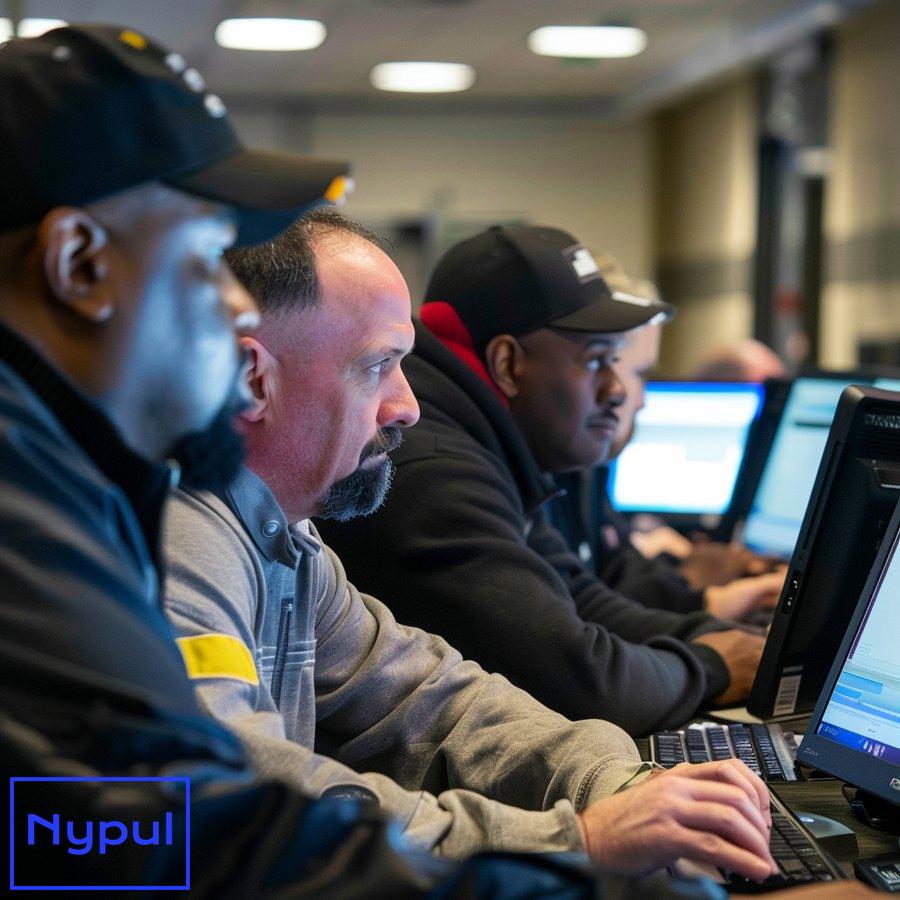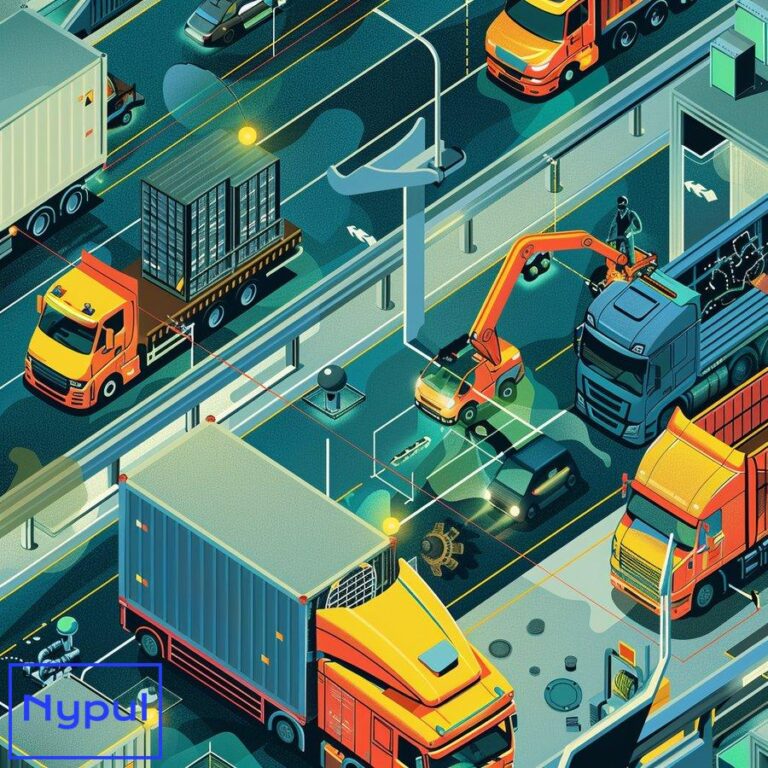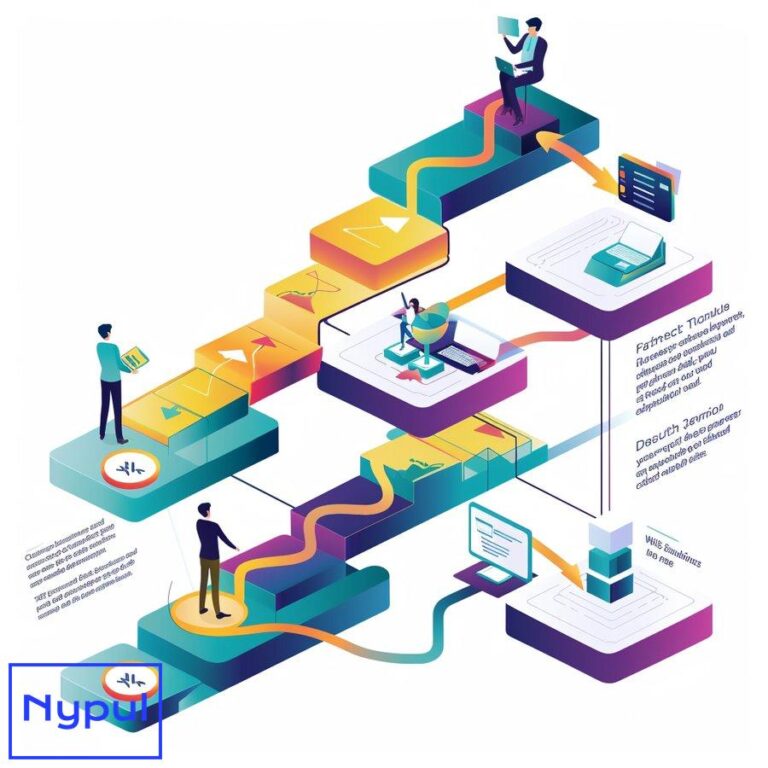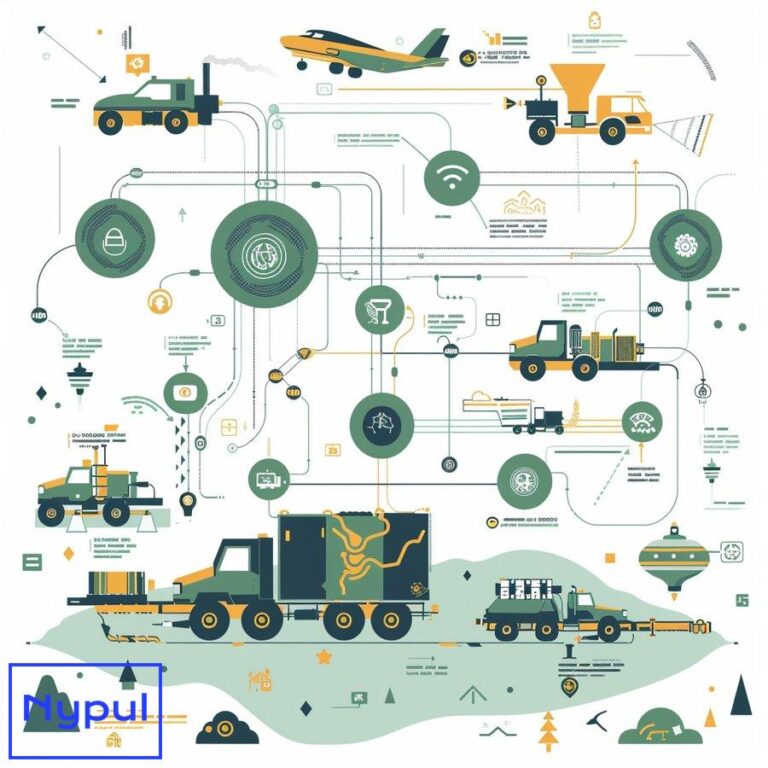What Are the Cybersecurity Issues in Transportation
Why is cybersecurity a growing concern in transportation?
Cybersecurity has become a critical issue in the transportation sector due to the increasing digitalization and interconnectedness of transportation systems. As vehicles, infrastructure, and logistics operations become more reliant on digital technologies, they also become more vulnerable to cyber threats.

The transportation industry handles vast amounts of sensitive data, including passenger information, cargo manifests, and financial transactions. This data is valuable to cybercriminals, making transportation companies attractive targets. In 2020, the transportation sector accounted for over 6% of all data breach incidents, according to the Identity Theft Resource Center.
Connected vehicles and smart infrastructure introduce new attack vectors. Modern vehicles contain dozens of electronic control units and can connect to external networks, creating potential entry points for hackers. Similarly, smart traffic lights, electronic tolling systems, and other connected infrastructure components expand the cyber attack surface.
The consequences of cyberattacks on transportation systems can be severe, potentially impacting public safety, causing economic losses, and disrupting critical supply chains. For example, a ransomware attack on a major logistics company could halt shipments and cause widespread economic ripple effects.
Geopolitical factors also contribute to growing cybersecurity concerns. State-sponsored cyber attacks targeting transportation infrastructure have increased in recent years as part of broader hybrid warfare strategies. Critical transportation assets are seen as strategic targets that could be disrupted to cause economic damage or social unrest.
The table below summarizes key factors driving cybersecurity concerns in transportation:
| Factor | Description | Impact |
|---|---|---|
| Digitalization | Increased use of digital systems and connectivity | Expands attack surface and vulnerabilities |
| Data Value | Large volumes of sensitive operational and customer data | Makes transportation attractive target for cybercriminals |
| Connected Vehicles/Infrastructure | Vehicles and infrastructure with network connectivity | Creates new potential entry points for attacks |
| Critical Infrastructure Status | Transportation as essential infrastructure | High-impact target for malicious actors |
| Supply Chain Disruption Potential | Ability to cause widespread economic effects | Motivates state-sponsored and criminal attacks |
As transportation systems continue to evolve technologically, cybersecurity will remain a growing concern requiring ongoing vigilance, investment, and collaboration across the industry. Transportation companies must prioritize cybersecurity as a core part of their operations and risk management strategies.
What are the primary cybersecurity challenges facing the transportation sector?
The transportation sector faces a unique set of cybersecurity challenges due to its complex ecosystem of interconnected systems, legacy infrastructure, and critical role in national and global economies. Understanding these challenges is crucial for developing effective cybersecurity strategies.

Diverse and legacy systems: Transportation infrastructure often includes a mix of modern and legacy systems, some of which may be decades old. Older systems were not designed with cybersecurity in mind and can be difficult or impossible to patch, creating vulnerabilities. Integrating these legacy components with newer, more secure systems presents significant technical challenges.
Interconnected networks: Transportation relies on highly interconnected networks spanning multiple modes (air, sea, rail, road) and stakeholders (operators, regulators, passengers). This interconnectedness means a breach in one area can potentially impact the entire ecosystem. For example, a cyberattack on an air traffic control system could disrupt flights worldwide.
Real-time operations: Many transportation systems operate in real-time, with little tolerance for downtime or disruptions. This makes it challenging to implement security updates or respond to threats without impacting critical operations. Balancing security with operational continuity is an ongoing challenge.
Supply chain complexity: Transportation companies often rely on complex supply chains involving numerous third-party vendors and service providers. Each of these entities represents a potential weak link in the cybersecurity chain. Managing and securing this extended network of partners is a significant challenge.
Regulatory compliance: The transportation sector is subject to various cybersecurity regulations and standards, which can vary by region and mode of transport. Complying with these diverse requirements while maintaining operational efficiency can be complex and resource-intensive.
Skill shortage: There is a global shortage of cybersecurity professionals, and this shortage is particularly acute in the transportation sector. Many transportation companies struggle to attract and retain skilled cybersecurity personnel who understand both IT and operational technology (OT) environments.
Insider threats: Employees and contractors with insider access pose a significant risk, whether through malicious intent or unintentional actions. Managing insider threats while maintaining operational efficiency is a delicate balance.
Emerging technologies: The adoption of new technologies like autonomous vehicles, drones, and IoT devices introduces new vulnerabilities and attack vectors that must be addressed.
Physical-cyber convergence: In transportation, cyber and physical systems are often closely intertwined. This convergence means that cyber attacks can have direct physical consequences, such as causing accidents or disrupting traffic flow.
Data privacy: Transportation companies handle large volumes of personal data, including travel records and payment information. Protecting this data while complying with privacy regulations like GDPR is an ongoing challenge.
The table below summarizes these challenges and their potential impacts:
| Challenge | Description | Potential Impact |
|---|---|---|
| Diverse and legacy systems | Mix of old and new technologies | Increased vulnerabilities, integration difficulties |
| Interconnected networks | Highly connected systems across modes | Widespread disruption from single point of failure |
| Real-time operations | Continuous, time-sensitive processes | Limited window for security updates, high cost of downtime |
| Supply chain complexity | Numerous third-party dependencies | Increased attack surface, difficult to secure comprehensively |
| Regulatory compliance | Multiple, sometimes conflicting standards | Resource drain, potential legal/financial penalties |
| Skill shortage | Lack of specialized cybersecurity talent | Inadequate threat response, increased vulnerabilities |
| Insider threats | Risks from employees and contractors | Data breaches, sabotage, unintentional compromises |
| Emerging technologies | New systems introduce new risks | Unknown vulnerabilities, expanded attack surface |
| Physical-cyber convergence | Cyber attacks with physical consequences | Safety risks, operational disruptions |
| Data privacy | Handling of sensitive personal information | Regulatory fines, reputational damage |
Addressing these challenges requires a comprehensive approach that combines technological solutions, policy frameworks, employee training, and industry-wide collaboration. Transportation companies must continuously adapt their cybersecurity strategies to keep pace with evolving threats and technological advancements.
How do cybersecurity risks differ across various transportation modes?
Cybersecurity risks in the transportation sector vary significantly across different modes of transport, each presenting unique vulnerabilities and challenges. Understanding these mode-specific risks is crucial for developing targeted cybersecurity strategies.
Aviation

The aviation industry faces some of the most complex cybersecurity challenges due to its highly interconnected nature and reliance on advanced technologies. Key risk areas include:
Air Traffic Control Systems: These critical systems manage airspace and coordinate flights. A successful attack could cause chaos in air travel, potentially leading to collisions or widespread flight cancellations.
Aircraft Systems: Modern aircraft are essentially flying computers, with numerous interconnected systems controlling everything from navigation to in-flight entertainment. Vulnerabilities in these systems could potentially allow hackers to interfere with flight operations.
Passenger Data: Airlines handle vast amounts of sensitive passenger information, making them attractive targets for data theft.
Airport Infrastructure: From security screening equipment to baggage handling systems, airports rely on numerous networked systems that could be targeted by cybercriminals.
Maritime
The maritime sector faces unique cybersecurity challenges due to its global nature and the increasing automation of ships and port facilities:
Ship Navigation Systems: GPS spoofing or jamming could misdirect vessels, potentially causing collisions or groundings.
Port Management Systems: Attacks on these systems could disrupt cargo handling, causing significant economic impacts.
Automated Cargo Handling: As ports become more automated, the risk of cyber attacks disrupting operations increases.
Satellite Communications: Ships rely heavily on satellite communications, which can be vulnerable to interception or disruption.
Rail
Rail systems are becoming increasingly digitalized, introducing new cybersecurity risks:
Signaling Systems: These critical systems control train movements. A cyber attack could potentially cause collisions or derailments.
Positive Train Control: This safety system, designed to prevent train-to-train collisions, relies on complex software and communications systems that could be vulnerable to attack.
Passenger Information Systems: While less critical to safety, these systems handle personal data and could be targeted for theft or disruption.
Road Transportation
The road transportation sector faces evolving cybersecurity risks as vehicles become more connected and automated:
Connected Vehicles: Modern vehicles with internet connectivity could potentially be hacked, allowing attackers to control vehicle systems remotely.
Traffic Management Systems: Smart traffic lights and other connected infrastructure could be targeted to cause traffic chaos.
Fleet Management Systems: These systems, used by trucking and logistics companies, handle sensitive data about vehicle locations and cargo.
Autonomous Vehicles: As self-driving technology advances, the potential for cyber attacks to cause physical harm increases.
The table below summarizes the key cybersecurity risks across different transportation modes:
| Mode | Key Systems at Risk | Potential Impacts |
|---|---|---|
| Aviation | Air Traffic Control, Aircraft Systems, Passenger Data Systems | Flight disruptions, safety risks, data breaches |
| Maritime | Ship Navigation, Port Management, Automated Cargo Systems | Shipping delays, collisions, economic losses |
| Rail | Signaling Systems, Positive Train Control, Passenger Info Systems | Train collisions, service disruptions, data theft |
| Road | Connected Vehicles, Traffic Management, Fleet Management | Traffic chaos, vehicle hijacking, cargo theft |
While each mode faces unique risks, there are also common themes across the transportation sector:
Interconnectedness: All modes rely on interconnected systems, meaning a breach in one area can have widespread effects.
Safety Implications: Unlike many other industries, cyber attacks in transportation can directly threaten human life.
Economic Impact: Disruptions to any mode of transport can have significant economic consequences, affecting global supply chains.
Data Privacy: All modes handle sensitive data, from passenger information to cargo manifests, making data protection a universal concern.
Legacy Systems: Across all modes, the integration of legacy systems with modern technology creates cybersecurity challenges.
Understanding these mode-specific risks is essential for transportation companies, regulators, and cybersecurity professionals. It allows for the development of targeted security measures that address the unique vulnerabilities of each transportation mode while also recognizing the interconnected nature of the overall transportation ecosystem.
What are the potential impacts of cyberattacks on transportation systems?
Cyberattacks on transportation systems can have far-reaching consequences, affecting not only the targeted organizations but also broader economic, social, and national security interests. Understanding these potential impacts is crucial for prioritizing cybersecurity measures and developing effective response strategies.
Safety Risks
The most critical potential impact of cyberattacks on transportation systems is the threat to human safety. Transportation systems are responsible for safely moving millions of people and tons of cargo daily. A successful cyberattack could compromise this safety in several ways:
Vehicle Control: Attacks on connected or autonomous vehicles could potentially allow hackers to take control, causing accidents or deliberate harm.
Infrastructure Manipulation: Compromising traffic signals, railway switches, or air traffic control systems could lead to collisions or derailments.
Safety System Disabling: Attacks that disable or interfere with safety systems like positive train control or aircraft collision avoidance systems could increase accident risks.
Economic Disruption
The transportation sector is a critical component of the global economy, and cyberattacks can cause significant economic damage:
Supply Chain Disruptions: Attacks on logistics systems or port operations can delay shipments, causing ripple effects throughout supply chains.
Financial Losses: Direct costs from cyberattacks include ransom payments, system recovery expenses, and lost revenue from service interruptions.
Market Impact: High-profile cyberattacks can affect stock prices and investor confidence in transportation companies.
Broader Economic Effects: Major disruptions to transportation systems can impact entire economies, affecting productivity and trade.
Operational Disruptions
Cyberattacks can severely disrupt transportation operations, leading to:
Service Delays and Cancellations: Attacks on booking systems, traffic management, or vehicle control systems can cause widespread service disruptions.
Stranded Passengers or Cargo: In severe cases, cyberattacks could leave passengers stranded or cargo undeliverable.
Long-term Operational Changes: Responding to cyber threats may require changes to operational procedures, potentially reducing efficiency.
Data Breaches
Transportation companies handle vast amounts of sensitive data, making them attractive targets for data theft:
Personal Information Exposure: Breaches can expose passenger data, potentially leading to identity theft or fraud.
Corporate Espionage: Theft of proprietary information or trade secrets can damage competitiveness.
Regulatory Penalties: Data breaches can result in significant fines under regulations like GDPR.
Reputational Damage
Cyberattacks can severely damage the reputation of transportation companies and even entire modes of transport:
Loss of Customer Trust: Passengers may lose confidence in companies or systems that have been successfully attacked.
Brand Damage: High-profile cyberattacks can cause long-lasting damage to company brands.
Industry-wide Effects: Major incidents can affect public perception of entire transportation modes (e.g., concerns about the safety of autonomous vehicles).
National Security Implications
Transportation infrastructure is often considered critical national infrastructure, and cyberattacks can have national security implications:
Strategic Disruptions: Attacks on key transportation hubs could be used as part of broader hybrid warfare strategies.
Economic Warfare: Disrupting a nation’s transportation systems can be a form of economic warfare.
Intelligence Gathering: Cyberattacks may be used to gather intelligence on transportation patterns or capabilities.
The table below summarizes these potential impacts:
| Impact Category | Examples | Potential Consequences |
|---|---|---|
| Safety Risks | Vehicle control takeover, infrastructure manipulation | Accidents, injuries, loss of life |
| Economic Disruption | Supply chain delays, financial losses | Reduced productivity, economic downturns |
| Operational Disruptions | Service cancellations, stranded passengers/cargo | Customer dissatisfaction, revenue loss |
| Data Breaches | Personal information theft, corporate espionage | Identity theft, competitive disadvantage |
| Reputational Damage | Loss of customer trust, brand damage | Reduced market share, long-term financial impact |
| National Security | Strategic disruptions, economic warfare | Geopolitical tensions, compromised national defense |
The interconnected nature of transportation systems means that impacts can quickly cascade beyond the initial target. For example, a cyberattack on a major port could not only disrupt maritime operations but also affect road and rail transport, causing widespread economic effects.
Given these potential impacts, it’s clear that cybersecurity in the transportation sector is not just an IT issue, but a critical business and national security concern. Transportation companies, regulators, and governments must work together to develop robust cybersecurity strategies that address these diverse and significant risks. This includes not only preventive measures but also comprehensive incident response plans to mitigate the impacts of successful attacks.
How are AI and machine learning transforming transportation cybersecurity?
Artificial Intelligence (AI) and Machine Learning (ML) are revolutionizing cybersecurity in the transportation sector, offering new tools to defend against evolving threats while also introducing new challenges. These technologies are transforming how transportation companies detect, prevent, and respond to cyber threats.
Threat Detection and Prevention
AI and ML are significantly enhancing the ability to detect and prevent cyber threats in transportation systems:
Anomaly Detection: ML algorithms can analyze vast amounts of network traffic and system behavior data to identify unusual patterns that may indicate a cyber attack. This is particularly valuable in complex transportation networks where traditional rule-based systems may struggle to keep up with the volume and variety of data.
Predictive Analytics: AI systems can predict potential vulnerabilities and attack vectors by analyzing historical data and current trends. This allows transportation companies to proactively address weaknesses before they can be exploited.
Real-time Threat Intelligence: AI-powered systems can continuously monitor global threat landscapes, instantly updating defenses against new types of attacks. This is crucial in the fast-paced transportation environment where delays in threat response can have serious consequences.
Automated Response
AI and ML are enabling more rapid and effective responses to cyber incidents:
Automated Incident Response: AI systems can automatically initiate predefined response protocols when threats are detected, reducing response times and minimizing human error.
Dynamic Defense Adjustments: ML algorithms can learn from each incident, continuously improving defense strategies and adapting to new types of attacks.
Threat Prioritization: AI can help prioritize threats based on their potential impact, allowing cybersecurity teams to focus on the most critical issues first.
Enhanced Authentication and Access Control
AI and ML are improving authentication and access control systems in transportation:
Behavioral Biometrics: ML algorithms can analyze patterns in user behavior to provide continuous authentication, detecting unauthorized access attempts even if credentials have been compromised.
Adaptive Access Control: AI systems can dynamically adjust access permissions based on real-time risk assessments, enhancing security without unduly impeding legitimate operations.
Challenges and Risks
While AI and ML offer significant benefits, they also introduce new challenges and risks:
AI-powered Attacks: Just as defenders can use AI, so can attackers. AI-powered malware and phishing attacks are becoming more sophisticated and harder to detect.
Data Privacy Concerns: The large datasets required to train effective AI models may include sensitive information, raising privacy concerns.
Explainability Issues: Some AI algorithms, particularly deep learning models, can be “black boxes,” making## How are AI and machine learning transforming transportation cybersecurity?
(continued from previous section)
Explainability Issues: Some AI algorithms, particularly deep learning models, can be “black boxes,” making it difficult to understand and explain their decision-making processes. This lack of explainability can be problematic in high-stakes domains like transportation cybersecurity.
Algorithmic Bias: AI systems can perpetuate and amplify human biases present in training data, leading to unfair or discriminatory decisions. Ensuring algorithmic fairness is crucial in transportation, where biased access control or threat prioritization could have severe consequences.
Dependence on AI: As transportation companies become increasingly reliant on AI for cybersecurity, the potential impact of AI failures or attacks grows. A successful attack on an AI-powered defense system could leave transportation networks vulnerable.
Despite these challenges, the benefits of AI and ML in transportation cybersecurity are clear. As these technologies continue to advance, they will play an increasingly central role in protecting critical transportation infrastructure from evolving cyber threats. However, it’s essential that transportation companies approach AI adoption thoughtfully, considering not only the potential benefits but also the risks and challenges.
What regulatory frameworks govern cybersecurity in transportation?
The transportation sector is subject to a complex web of cybersecurity regulations and standards that vary by mode, region, and jurisdiction. Understanding these frameworks is crucial for transportation companies to ensure compliance and maintain secure operations.
International Frameworks
Several international organizations have developed cybersecurity guidelines and standards for the transportation sector:
International Maritime Organization (IMO): The IMO has issued guidelines for maritime cyber risk management, emphasizing the need for a safety management approach to cybersecurity.
International Civil Aviation Organization (ICAO): ICAO has incorporated cybersecurity considerations into its standards and recommended practices for aviation safety.
United Nations Economic Commission for Europe (UNECE): UNECE has developed cybersecurity regulations for connected vehicles, focusing on software updates and incident response.
Regional and National Regulations
Many countries and regional bodies have also enacted transportation-specific cybersecurity regulations:
European Union: The EU has several directives and regulations related to transportation cybersecurity, including the Network and Information Security (NIS) Directive and the General Data Protection Regulation (GDPR).
United States: The U.S. has issued cybersecurity regulations for various transportation modes, such as the Transportation Security Administration’s (TSA) Security Directives for aviation and the Federal Railroad Administration’s (FRA) Cybersecurity Action Plan.
China: China has implemented the Cybersecurity Law and the Personal Information Protection Law, which impact transportation companies operating in the country.
Industry Standards and Guidelines
In addition to regulatory frameworks, the transportation sector has developed numerous industry-specific cybersecurity standards and guidelines:
NIST Cybersecurity Framework: While not specific to transportation, this framework is widely adopted across the sector as a basis for cybersecurity risk management.
ISO/IEC 27001: This international standard for information security management is commonly used by transportation companies to establish and maintain secure systems.
AASHTO Cyber Incident Response Plan: The American Association of State Highway and Transportation Officials (AASHTO) has developed a guide for creating cyber incident response plans for state transportation agencies.
CISA Transportation Systems Sector-Specific Plan: The U.S. Cybersecurity and Infrastructure Security Agency (CISA) has created a sector-specific plan for securing transportation systems.
Compliance with these frameworks is essential for transportation companies to mitigate cyber risks and avoid potential legal and financial penalties. However, navigating the complex regulatory landscape can be challenging, particularly for companies operating across multiple jurisdictions.
To ensure effective cybersecurity governance, transportation companies should:
- Identify all applicable regulations and standards based on their mode of transport, geographic footprint, and data handling practices.
- Develop comprehensive compliance programs that address both regulatory requirements and industry best practices.
- Regularly review and update their cybersecurity policies and procedures to keep pace with evolving regulations and threats.
- Collaborate with industry associations, regulators, and peers to advocate for clear, consistent, and effective cybersecurity regulations.
By proactively addressing cybersecurity regulations, transportation companies can not only mitigate legal and financial risks but also enhance the overall security of the transportation ecosystem.
How can transportation companies implement effective access controls?
Effective access controls are a critical component of transportation cybersecurity, ensuring that only authorized individuals and systems can access sensitive data and critical systems. Implementing robust access controls requires a multi-layered approach that combines technical measures with strong policies and procedures.
Authentication
Strong authentication is the foundation of effective access control. Transportation companies should implement:
Multi-factor Authentication (MFA): Requiring multiple forms of authentication (e.g., password, biometric, or hardware token) significantly reduces the risk of unauthorized access.
Behavioral Biometrics: Analyzing user behavior patterns (e.g., typing rhythm, mouse movements) can provide continuous authentication and detect anomalies.
Centralized Identity Management: Using a centralized identity and access management (IAM) system simplifies user provisioning and de-provisioning across multiple systems.
Authorization
Granular authorization controls ensure that users and systems can only perform actions and access data that are necessary for their roles. Transportation companies should:
Implement Role-based Access Control (RBAC): RBAC defines access permissions based on job functions, simplifying management and reducing the risk of over-privileged accounts.
Regularly Review and Update Access Rights: Periodically reviewing and updating access rights ensures that permissions remain appropriate as user roles and responsibilities change.
Enforce Least Privilege: Granting users and systems the minimum permissions necessary to perform their tasks reduces the potential impact of compromised accounts.
Logging and Monitoring
Comprehensive logging and monitoring are essential for detecting and investigating unauthorized access attempts. Transportation companies should:
Implement Robust Logging: Maintain detailed logs of all access attempts, including successful and failed logins, privilege escalations, and configuration changes.
Continuously Monitor Access Activity: Use security information and event management (SIEM) tools to analyze logs and detect suspicious activity in real-time.
Regularly Review and Analyze Logs: Periodically review access logs to identify potential security incidents or policy violations.
Physical Security
Physical security measures are an important complement to digital access controls, particularly in transportation environments where physical and cyber systems converge. Transportation companies should:
Implement Physical Access Controls: Use locks, badges, and biometrics to restrict physical access to critical systems and facilities.
Regularly Review and Update Physical Security Measures: Assess and update physical security measures as new threats emerge and facilities change.
Train Employees on Physical Security Best Practices: Educate employees on the importance of physical security and how to identify and report suspicious activities.
Policies and Procedures
Effective access controls require clear, well-communicated policies and procedures. Transportation companies should:
Develop and Regularly Update Access Control Policies: Establish policies that define authentication requirements, authorization standards, and logging and monitoring practices.
Implement Onboarding and Offboarding Procedures: Ensure that access rights are promptly provisioned for new users and revoked when employees or contractors leave the organization.
Train Employees on Access Control Best Practices: Educate employees on their roles and responsibilities in maintaining secure access controls, including password management and reporting suspicious activities.
By implementing a comprehensive access control strategy that combines technical measures with strong policies and procedures, transportation companies can significantly reduce the risk of unauthorized access and the potential consequences of cyber attacks.
What role does employee training play in transportation cybersecurity?

Employee training is a critical component of effective cybersecurity in the transportation sector. Even the most advanced technical controls can be undermined by a single employee falling victim to a phishing attack or inadvertently exposing sensitive data. Comprehensive and ongoing employee training is essential for creating a strong security culture and reducing human-related cyber risks.
Awareness Training
Regular cybersecurity awareness training helps employees understand the importance of security and their role in protecting the organization. Awareness training should cover:
Common Cyber Threats: Educate employees on the most prevalent threats facing the transportation industry, such as phishing, ransomware, and social engineering attacks.
Security Best Practices: Provide guidance on security best practices, including password management, identifying suspicious emails, and reporting potential incidents.
Organizational Policies: Ensure that employees are familiar with the company’s cybersecurity policies and procedures, including acceptable use guidelines and incident reporting protocols.
Role-based Training
In addition to general awareness training, transportation companies should provide role-specific training to employees based on their job functions and access to sensitive data or systems. Role-based training may include:
IT and Security Personnel: Advanced training on security tools, incident response procedures, and emerging threats.
Executives and Senior Leaders: Training on cybersecurity risk management, regulatory compliance, and communicating with stakeholders during incidents.
Operational Staff: Training on securing industrial control systems, protecting sensitive data related to cargo or passengers, and recognizing potential physical security breaches.
Contractors and Third-party Vendors: Training on security expectations, access control procedures, and incident reporting requirements.
Continuous Learning
Cybersecurity is a constantly evolving landscape, and employee training must keep pace with emerging threats and best practices. Transportation companies should implement:
Regular Training Updates: Review and update training content at least annually to reflect changes in threats, technologies, and organizational policies.
Simulated Phishing Exercises: Conduct periodic phishing email simulations to test employee awareness and identify areas for improvement.
Gamification and Interactive Learning: Use interactive training methods, such as games and quizzes, to engage employees and reinforce key concepts.
Incentives and Recognition: Recognize and reward employees who demonstrate strong security practices or report potential incidents, encouraging a culture of security.
Measuring Effectiveness
To ensure that employee training is achieving its desired outcomes, transportation companies should measure its effectiveness through:
Pre- and Post-training Assessments: Evaluate employee knowledge and behavior before and after training to gauge its impact.
Incident Tracking: Monitor the number and type of security incidents involving employees to identify areas where additional training may be needed.
Employee Feedback: Solicit feedback from employees on the relevance, clarity, and usefulness of training content to inform future iterations.
By making employee training a priority and continuously reinforcing a culture of security, transportation companies can significantly reduce the risk of human-related cyber incidents and enhance the overall resilience of their cybersecurity posture.
How can public-private partnerships enhance transportation cybersecurity?
Enhancing cybersecurity in the transportation sector requires collaboration between public and private stakeholders. Public-private partnerships (PPPs) offer a framework for government agencies and transportation companies to work together to identify threats, share information, and develop coordinated responses to cyber incidents.
Information Sharing
One of the primary benefits of PPPs is the ability to facilitate the sharing of threat intelligence and best practices between the public and private sectors. This includes:
Sharing Threat Information: Government agencies can provide transportation companies with timely, actionable intelligence on emerging cyber threats, while companies can share information on incidents and vulnerabilities.
Exchanging Best Practices: Transportation companies can learn from each other and from government agencies about effective cybersecurity strategies, tools, and techniques.
Facilitating Collaboration: PPPs create forums for transportation companies, government agencies, and other stakeholders to collaborate on cybersecurity initiatives and share knowledge.
Joint Risk Assessment and Planning
PPPs can also support joint risk assessment and planning efforts to enhance the overall resilience of the transportation sector:
Identifying Interdependencies: By working together, public and private stakeholders can better understand the interdependencies between transportation modes and the potential cascading effects of cyber incidents.
Conducting Joint Risk Assessments: Government agencies and transportation companies can collaborate on comprehensive risk assessments to identify and prioritize threats and vulnerabilities.
Developing Joint Response Plans: PPPs can facilitate the development of coordinated incident response and recovery plans to ensure effective collaboration during cyber crises.
Regulatory Harmonization
PPPs can also play a role in harmonizing cybersecurity regulations and standards across the transportation sector:
Providing Input on Regulations: Transportation companies can provide valuable input to government agencies on the practical implications and feasibility of proposed cybersecurity regulations.
Advocating for Consistent Standards: PPPs can advocate for the adoption of consistent cybersecurity standards and best practices across the transportation sector, reducing compliance burdens and enhancing overall security.
Facilitating Regulatory Compliance: Government agencies can provide guidance and support to transportation companies on meeting regulatory requirements, particularly for smaller organizations with limited resources.
Funding and Resource Allocation
PPPs can also help secure funding and allocate resources to support transportation cybersecurity initiatives:
Securing Funding: Government agencies can provide funding and grants to transportation companies for cybersecurity projects, particularly for critical infrastructure protection.
Sharing Resources: PPPs can facilitate the sharing of cybersecurity resources, such as personnel, tools, and facilities, between government agencies and transportation companies.
Providing Technical Assistance: Government agencies can offer technical assistance and expertise to transportation companies to help them implement effective cybersecurity measures.
Examples of Successful PPPs in Transportation Cybersecurity
Several successful examples of PPPs in transportation cybersecurity exist:
The Transportation Security Administration (TSA) and the Aviation Sector Coordination Council (ASCC): This partnership between the TSA and aviation industry stakeholders facilitates information sharing and joint risk assessments for the aviation sector.
The Maritime Transportation System Information Sharing and Analysis Center (MTS-ISAC): This PPP brings together government agencies and maritime industry partners to share threat intelligence and best practices.
The Surface Transportation Information Sharing and Analysis Center (ST-ISAC): This partnership focuses on enhancing cybersecurity in the surface transportation sector, including rail, road, and pipeline transportation.
By fostering strong public-private partnerships, the transportation sector can enhance its overall cybersecurity posture and better protect critical infrastructure from evolving cyber threats. However, for PPPs to be effective, they must be built on a foundation of trust, clear communication, and a shared commitment to enhancing the resilience of the transportation ecosystem.






